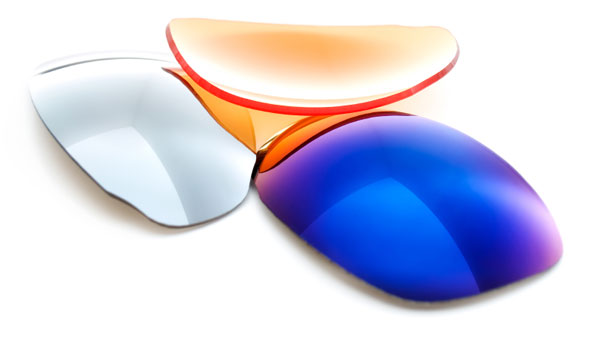I often speak about the few messages the average consumer gets about our industry. Things like "get two pair for $99" or "this pair is good in every light," and the one that simply amazes me "come in for a free exam." Nothing like a little national advertising to make sure we drive ourselves into the land of no value and commoditization. However, there is one area that still remains an antidote to commoditization, and that is technology.
Technology is all around us. It amazes us daily with new applications, advancements and most importantly the information and benefits that come as a result of it. The optical industry has had more technological advancements in the last 10 years than in the previous 50. Ironically, many of our patients have no idea what leaps and bounds have been made on the technology side of eyecare because that story is lost in commodity messaging. Let's lay out the case of lens technology and how we can use it to drive value back into the optical experience.

I have been in the industry for a long time and I am still fascinated by the level of diagnostic technology that is available through my doctor. Imagine the ability to take a picture in high definition and see things that only a few years ago were a dream. Now we have the ability to conduct a DNA tests to determine if we have the genes to develop certain diseases that can rob of us our most precious senses. We should never lose sight of the value diagnostics have on the future of our patient's quality of life. It is incredible. Just as we have made advancements in those areas, let's not wash over the developments in lens technology.
Lens Technology
There is a time and place for technology in lens dispensing. For many years I have held the belief that if you have a "normal prescription" between the 3's (+3 to -3 in spherical equivalent power) you can stay with traditional lens manufacturing. However, beyond the 3's there is a whole new world for people who never imaged seeing so clear, clean or crisp again. Some people have a hard time selling lens technology and I find it has more to do with OUR beliefs about it, than the patients.
Eliminates Swim Effect
Let's first examine what it does for the patient. Clear vision means no or very little "swimming" when they use their eyes in natural movement. To not have aberrations around the edges and have those moments of doubt or uncertainty in their vision is a huge benefit for a patient.
Eases Visual Fatigue
Clear vision means simply you can see how the eye was intended to see—naturally, cleanly and with less eye strain as the eye is seeing the way it should and not fighting every millisecond to adjust itself.
Enhances Fine Details
Finally, crisp vision allows us to see the details of life both near and far. For the first time in optical history the technology of lens manufacturing has caught up to diagnostic technology. Meaning, you can measure correction now to 1/100 of a diopter, up until a few years ago we could only manufacture to 1/25 diopter. There has never been a better time to provide our patients with the ability to see they way they were intended to see.
No Going Back
The easiest, most common reference for patients is the advent of high definition television. There is absolutely no going back to non-HDTV once you have experienced what television could be. If you could see cleanly, clearly and crisp for the next twelve to twenty-four months for an additional $.50 to $1.00 per day would you do it? Does that sound like a lot of extra money to you?
I liken it an iPhone. A new iPhone runs about $700 without a contract. With a contract, the cost of ownership of the phone over the course of two years will run as high as $3,100. Then we'll stand in long lines to get the newest version on release date so we can be one the first with the latest technology.
As consumers we keep striving to buy the latest and best in technology trying to attain the highest pixel counts for clean, clear, crisp visuals. Ironic isn't it. Looking at a $700 phone with incredible clarity through lenses that limit our ability to fully enjoy it. Yet that is what we essentially have when we could be selling or wearing digital lenses. Would you spend $700 on a pair of lenses that will allow you to see in the highest pixel counts you can, everyday in every situation—and not just by looking at your iPhone screen? Put that way, most consumers have shown they will be more than happy to invest in their vision.
Ask. Don't Sell.
I am frequently asked how I would position or sell digital lenses. The answer is I wouldn't. You don't need to sell them. What is missing in this equation is that you are assuming the patient does NOT want to see clearly, cleanly or crisp when in fact, given the choice, they do. More than likely they are unaware that we have aligned our diagnostics to our manufacturing over the last few years.
Instead of selling, ask a few questions:
- Would you like to see as good as you did in the exam chair?
- Have you ever watched television in high definition?
- Would you like to match your lens performance to an HD viewing experience?
- Is seeing cleanly, clearly and crisp important to you?
Once you have asked the questions above, give with full confidence your recommendation of a digital lens. It's what they have always wanted to achieve in their quest for near perfect vision and today we can get them closer than ever before.
Technology is still the best commodity killer.
Retailing is a very competitive place for every industry and every market. It is now hitting optical and frankly, we are ill prepared. Now is the time to let our defenses down and think creatively how we can embrace the new world so everyone wins. It's not the patients' fault they are empowered. They have moved to consumers when purchasing eyewear.

Michael Karlsrud, M.Ed, is the principle consultant of The Karlsrud Company, a leading training and development company serving organizations throughout the United States. He also is CEO of K-Calls, a contact center that provides communication solutions to the optical industry's suppliers and doctors. You can hear Michael as the host of The Vision Council's On The Road Sales Coach, or read articles in LabAdvisor magazine and The 20/20 Opticians Handbook.












